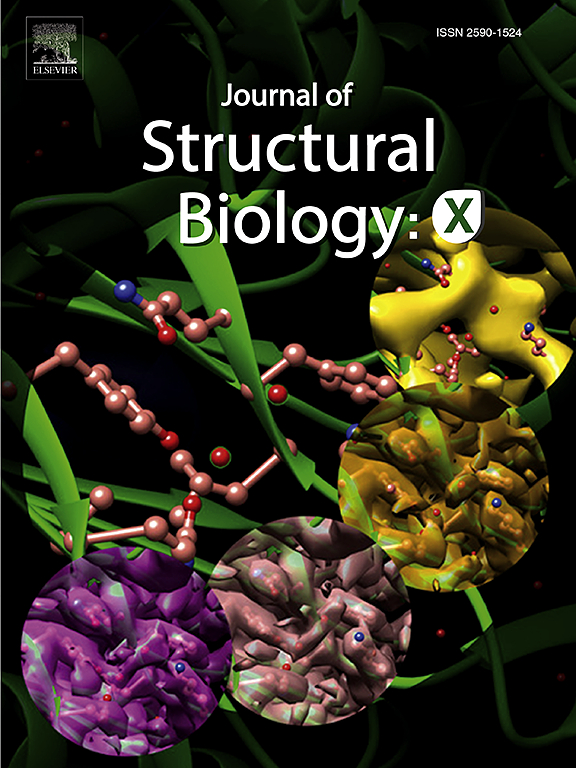Insights into the pathogenic mechanisms associated with the SARS-CoV-2 spike protein
IF 2.7
3区 生物学
Q3 BIOCHEMISTRY & MOLECULAR BIOLOGY
引用次数: 0
Abstract
Severe acute respiratory syndrome coronavirus 2 (SARS-CoV-2), the pathogenic agent responsible for the coronavirus disease 2019 (COVID-19) pandemic, uses the trimeric spike protein to gain entry into the host cell. Structural studies have revealed that the spike protein is comprised of the S1 and S2 subunits. The S1 subunit of the spike protein contains the receptor-binding domain (RBD), which binds to the human angiotensin-converting enzyme 2 (ACE2) receptor. The interaction between the RBD and ACE2 facilitates membrane fusion and host cell infection. The SARS-CoV-2 spike protein also contains a unique insertion of four amino acids that results in the 682-RRAR↓S-686 polybasic furin cleavage motif at the boundary of the S1 and S2 subunits. The furin cleavage motif contributes to the high infectivity and transmissibility of SARS-CoV-2. This review provides a comprehensive analysis of the molecular interactions of the spike protein, with a specific focus on the RBD and furin cleavage site. In addition to examining the binding characteristics with ACE2, the interactions with alternative receptors, such as neuropilin-1 (NRP1) and the nicotinic acetylcholine receptors (nAChRs) are highlighted. The ability of the spike protein to bind alternative receptors and host factors has been linked to the pathophysiology of COVID-19 and the persistence of symptoms in the post COVID-19 condition. Furthermore, we examine the impact of spike protein mutations on receptor affinity and disease severity. SARS-CoV-2 continues to evolve, with variants remaining an ongoing threat to public health. Understanding these molecular interactions is critical for the development of novel therapeutic interventions.

深入了解与SARS-CoV-2刺突蛋白相关的致病机制
严重急性呼吸综合征冠状病毒2 (SARS-CoV-2)是导致2019冠状病毒病(COVID-19)大流行的病原体,它利用三聚体刺突蛋白进入宿主细胞。结构研究表明,刺突蛋白由S1和S2亚基组成。刺突蛋白的S1亚基含有受体结合域(RBD),与人血管紧张素转换酶2 (ACE2)受体结合。RBD与ACE2的相互作用促进了膜融合和宿主细胞感染。SARS-CoV-2刺突蛋白还包含一个独特的4个氨基酸插入,在S1和S2亚基的边界上形成682-RRAR↓S-686多碱基furin切割基序。furin切割基序与SARS-CoV-2的高传染性和传播性有关。这篇综述提供了刺突蛋白分子相互作用的全面分析,特别关注RBD和furin切割位点。除了研究与ACE2的结合特性外,还强调了与其他受体的相互作用,如神经匹林-1 (NRP1)和烟碱乙酰胆碱受体(nAChRs)。刺突蛋白结合替代受体和宿主因子的能力与COVID-19的病理生理和COVID-19后症状的持续存在有关。此外,我们研究了刺突蛋白突变对受体亲和力和疾病严重程度的影响。SARS-CoV-2继续演变,其变体仍然对公共卫生构成持续威胁。了解这些分子相互作用对于开发新的治疗干预措施至关重要。
本文章由计算机程序翻译,如有差异,请以英文原文为准。
求助全文
约1分钟内获得全文
求助全文
来源期刊

Journal of structural biology
生物-生化与分子生物学
CiteScore
6.30
自引率
3.30%
发文量
88
审稿时长
65 days
期刊介绍:
Journal of Structural Biology (JSB) has an open access mirror journal, the Journal of Structural Biology: X (JSBX), sharing the same aims and scope, editorial team, submission system and rigorous peer review. Since both journals share the same editorial system, you may submit your manuscript via either journal homepage. You will be prompted during submission (and revision) to choose in which to publish your article. The editors and reviewers are not aware of the choice you made until the article has been published online. JSB and JSBX publish papers dealing with the structural analysis of living material at every level of organization by all methods that lead to an understanding of biological function in terms of molecular and supermolecular structure.
Techniques covered include:
• Light microscopy including confocal microscopy
• All types of electron microscopy
• X-ray diffraction
• Nuclear magnetic resonance
• Scanning force microscopy, scanning probe microscopy, and tunneling microscopy
• Digital image processing
• Computational insights into structure
 求助内容:
求助内容: 应助结果提醒方式:
应助结果提醒方式:


